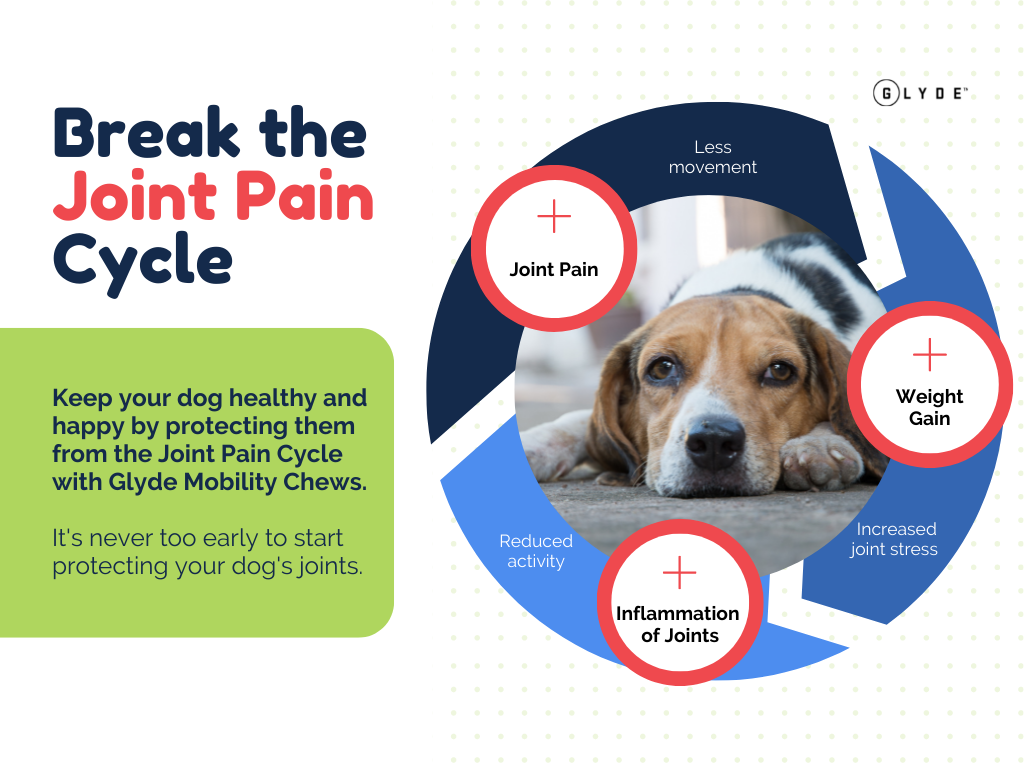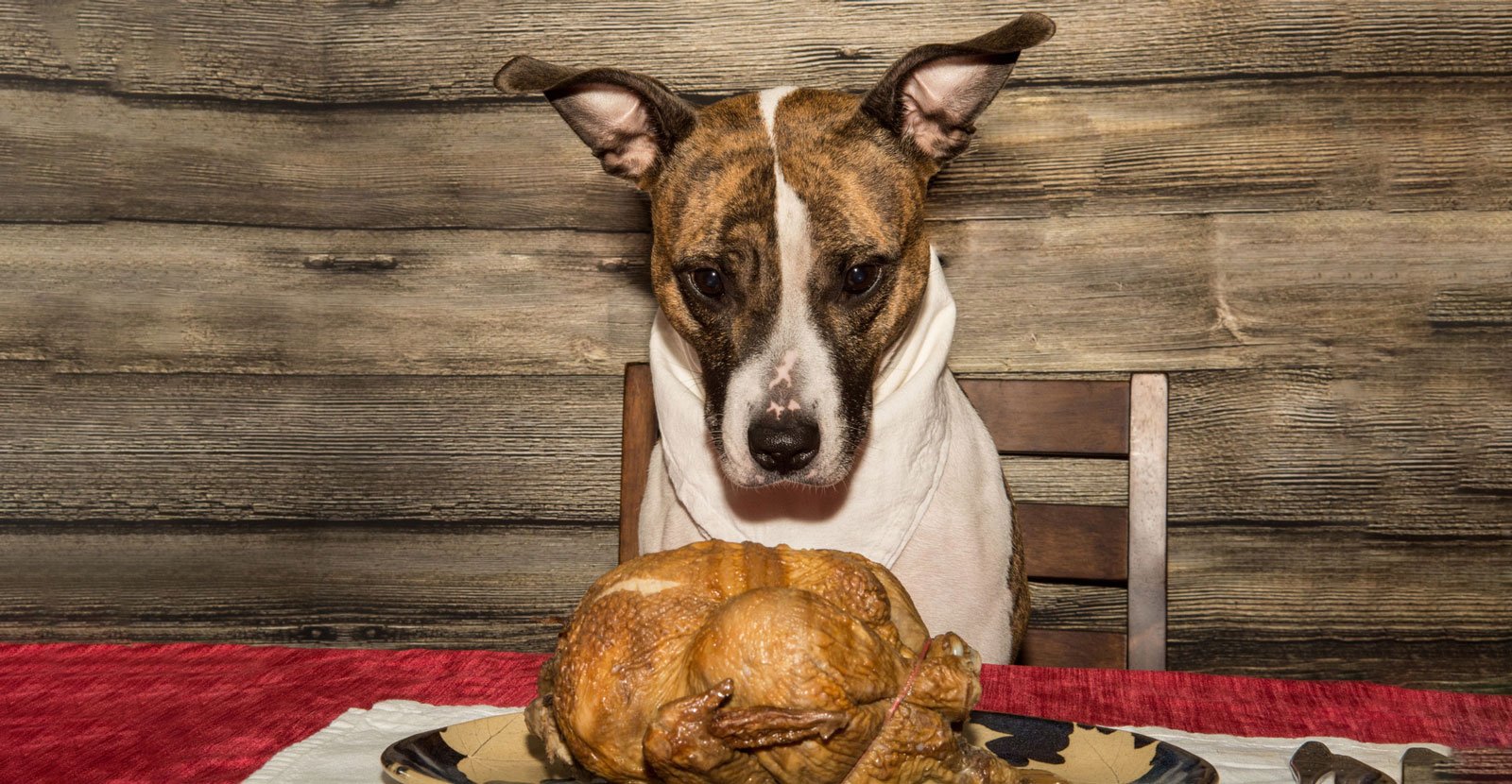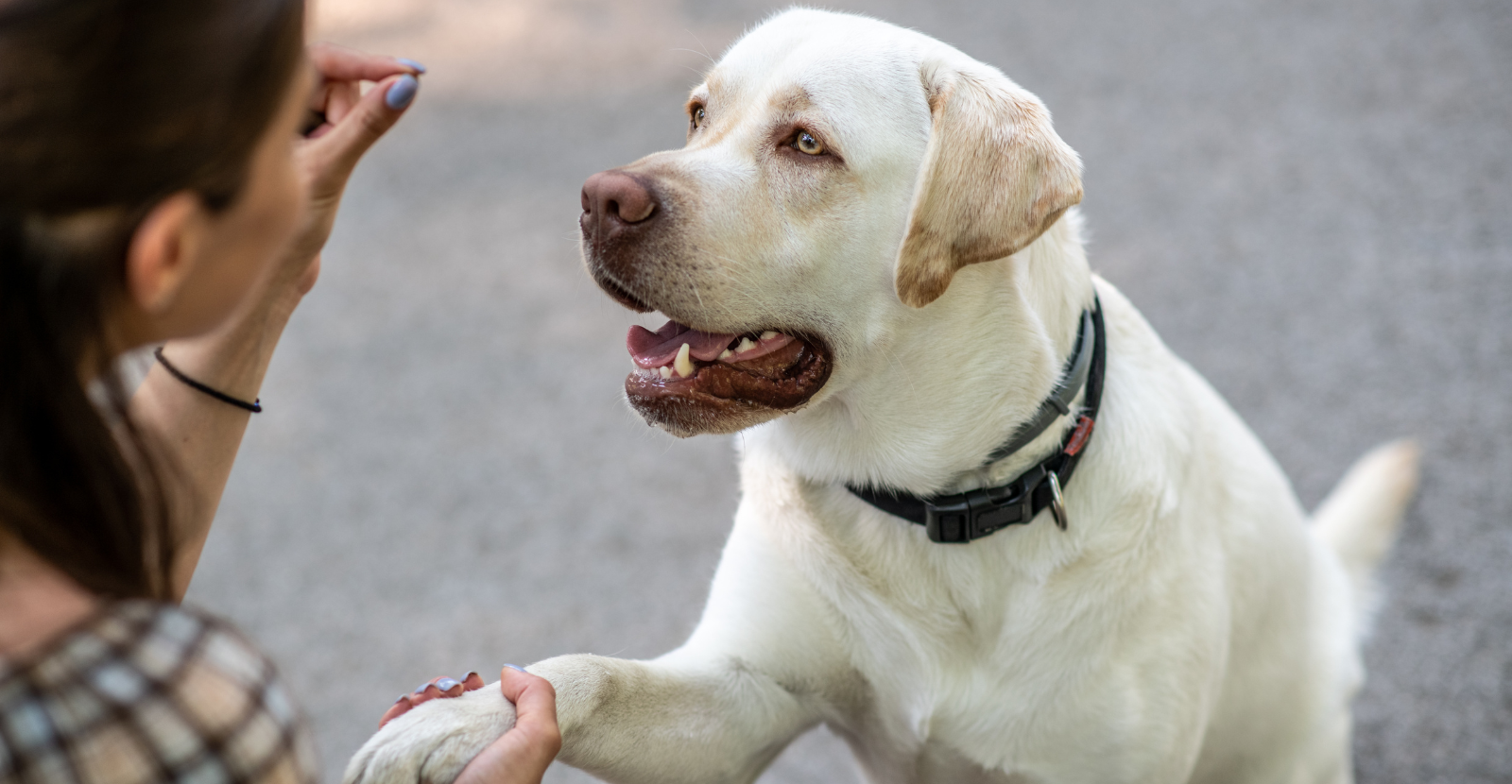We love our dogs, no matter what, so a few extra pounds make no matter to us. But for your dog to live a healthy, active life, their weight is important. In honor of National Pet Obesity Awareness Month in October, let’s use this opportunity to check our dog’s weight to make informed choices for our pups. This information will help you know what to look for to determine your dog’s ideal body weight, why it’s important and provide some resources and tools you can use.
Is my dog overweight?
It is estimated that 56% of dogs in the United States are overweight or obese. However, when asked by a veterinarian, only 5 to 7 percent of pet parents think their pet is overweight. A survey by the Association for Pet Obesity Prevention found that 55.8 percent of dogs were classified as overweight or obese. With extra weight comes extra health problems. It is important for your dog to live a long, healthy life.
Here is a short quiz that will get you started on seeing if you have an overweight dog or how to tell if your dog is overweight.
.png?width=1600&name=fat%20or%20fit%20dog%20(1).png)
Short Quiz: Is My Dog Fit or Fat?
Of course, always consult a veterinarian regarding your dog’s health and diet. But for education purposes, ask yourself these 5 questions to help you determine if your dog is fit or fat:
1. How often does your dog exercise?a. When they spend time outside for bathroom breaks
b. A 30-minute outdoor walk
c. An hour walk, plus fetch the ball for playtime
2. How many days a week do you take a walk with your dog?
a. 0-1 day a week
b. 2-3 days a week
c. 4-7 days a week
3. How much food do you feed your dog daily?
a. I don’t really know.
b. I fill the bowl twice a day and he eats when he wants.
c. I give my dog the amount of food indicated on the product according to my dog’s age and weight.
4. When you go to the kitchen to eat, do you give your dog a treat too?
a. Yes, every time
b. Yes, 2-4 times a day
c. Yes, their treats are healthy, all-natural and scheduled
5. How much is your dog sleeping?
a. Pretty much all day
b. About 50% of the day, or 12 hours
c. Less than 50% of the day, or less than 12 hours
- If you answered mostly As: Let’s Go! There is room for improvement. Your dog may be overweight. Set a goal and tackle it!
- If you answered mostly Bs: Keep it up! You are on average with other pet parents in following the guidelines. Your dog may be fit, or it may be fat. Commit to a regular routine!
- If you answered mostly Cs: You are a rock star! It’s a good guess that your dog is fit! Seek joy and continue to prioritize healthy ways!
For additional help determining if your dog is fat or fit, Purina developed the Body Condition System (BCS) for veterinarians to help with the confusion on what ideal body weight is for dogs. With all the different dog breeds and the shapes and sizes they come in, it’s easier to assess your dog with this system in mind, rather than using a scale. The BCS is used by veterinarians nationwide, and you’ve probably seen a printout of this chart hanging in your vet’s office. This chart gives you visual clues on what to look for to see if your dog is underweight, just the right weight, or overweight.
As you can see from the chart, it’s just a slight difference from too thin or too fat to ideal body weight. Obviously, it’s because of the size of dogs. For humans, an extra 5 pounds is often unnoticeable at 3% of the body weight of a 150-pound person. But for dogs, an extra 5 pounds could be 10% of your 50-pound dog’s body weight.
Again, it is important to note that you should discuss this with your veterinarian. But hopefully, this gives you a good sense of whether your dog is more fit or fat.
Top 3 Things Healthy Weight Dogs Do
This quiz takes the keys to healthy dogs into consideration. Your dog needs three things to stay healthy. Here’s a deeper dive on each.
Healthy diet
Healthy diets are important for dogs. Everyone loves to give their dogs a treat, but those calories add up. Be sure you feed your dog according to the information on the product you purchase. It usually goes by the weight of the dog, so be sure not to overfeed. People guilty of overfeeding their dogs are often the ones not keeping track by just "filling the bowl when it's empty." That is usually based on breed. Some breeds need measured amounts in the morning and evening and they gulp it down all at one time. This is usually the Beagles and Labrador Retrievers. Other breeds do more grazing. If your dog grazes, make sure you give it a measured amount based on the weight of the dog.
One thing you CAN always fill when empty is the water bowl. Dogs need water daily. A simple rule of thumb is to think your dog should drink an ounce of water in their body weight. So, a 10-pound dog should drink 10 ounces of water; a 50-pound dog should drink 50 ounces of water, and so on. But overall, you will not make any mistake in making sure your dog's water bowl is always full.
What about treats? So often, we want to give our dogs treats for rewards. There are other things you can give your dog besides treats. Try these alternatives:
- Ice cubes (yes, they love the crunch!). Make it a game where you slide it across the floor.
- Give praise! Your dog loves a simple “Good boy” or “Good girl” from you. They love to make you happy!
- Glyde® Mobility Chews joint supplements for dogs are all-natural and provide key ingredients for healthy joints. Glyde is good for them, and your dog will think it’s a treat when you know better!
Exercise
Exercise. On average, dogs need at least 20 – 45 minutes of exercise a day. Ideally, your dog will get a full hour of exercise per day, 30 minutes in the morning and 30 minutes at night. Sometimes it's hard to get it in every day due to busy schedules. Try to average 30 minutes a day. One of the best things for your dog is a walk outside. Walking your dog is both physical and mental work for your dog as they get to enjoy the outdoor environment and smell all the smells. But throwing the ball or Frisbee and playing fetch does count. If you rely on your dog going outside to the bathroom as their exercise, it simply isn't enough unless you are throwing the ball with them while they are out there.
Adequate sleep
On average, most dogs spend about 50% of their day sleeping or about 12 hours in a 24-hour period. Puppies, large-breed dogs, and older dogs may sleep more, while small-breed dogs and working dogs may sleep less.
If you notice your dog is sleeping more than usual, be sure to check their response when being awakened. Most dogs will wake up, stretch, and come around. If they are slow to move, or they don’t seem motivated to get up, it’s time to check in with the veterinarian.
Health Problems Associated with Overweight Dogs
The reason it is important for your dog to maintain a healthy weight is because of the associated health problems that usually accompany them. Some specific problems that puppies can develop from excess weight include:
- Arthritis, joint damage and joint pain
- Type 2 diabetes
- Heart disease
- Reduced exercise endurance and stamina
- Reduced liver function due to a fatty liver
Overweight dogs are more likely to have Arthritis
There is a vicious cycle when your dog has extra weight. When your dog is overweight, it's harder to exercise because of increased joint stress from the extra weight. With more weight comes less activity and less movement and then your dog doesn't move nearly as much as before. We call it the joint pain cycle. It's difficult to change, but with a plan in place, you can see improvement.

Break the Joint Pain Cycle
It is hard to break the cycle as it continues around and around, as shown in the illustration. Remember any step you take in a healthy direction is a great improvement. Give yourself grace and allow yourself and your dog the ability to add more healthy activities for both of your benefits. While you can't do it all in one week, here are some tips you can keep in mind to keep your dog fit and healthy.
- Exercise needs to be a key component of your daily activity. If you could increase the amount you are walking and exercising your dog from 30 minutes daily to 1 or 2 hours daily, both you and your dog will see many health benefits.
- Healthy diet. It is important you follow the instructions on your dog food product's packaging. Since each product is different, it's important to read them for the best tips on how much food your dog needs. Dogs also need plenty of water, so be sure their water bowl is never empty. Keep treats to a minimum and add nutritious supplements as an alternative to treats.
- Add a joint supplement, like Glyde Mobility Chews for Dogs. This powerful joint supplement has strong scientific backing to promote healthy joints. Glyde is the only joint supplement with proven levels of the key ingredients of green-lipped mussel (GLM), glucosamine, and chondroitin which works together to help reduce inflammation and pain, improve function, and slow the progression of joint damage and arthritis. With Glyde, protecting your dog’s joints is as easy as giving them a daily chew they think is a treat.
Remember to discuss this with your veterinarian for advice on your dog's weight and health. Hopefully, this information arms you with details on how you can stay on track, or make positive improvements to help your dog lead a long and active life.
Additional resources:
- National Pet Obesity Awareness
- Association for Pet Obesity Prevention Website
- Purina Dog Food’s Average Dog Weight Resource
- PetMD's article on how much sleep dogs need












